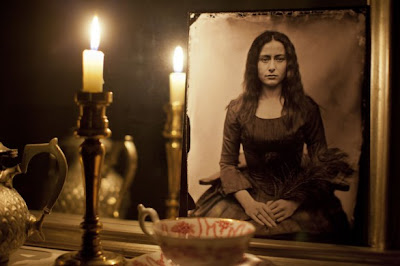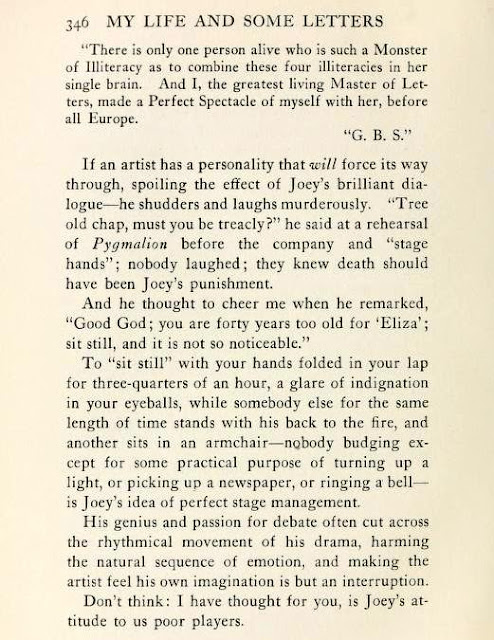Hardcover: 400 pages
Publisher: Simon & Schuster UK; First Edition edition (24 May 2012) Language: English
ISBN-10: 0857209272
ISBN-13: 978-0857209276
Just outside London, behind a high stone wall, lies Lake House, a private asylum for genteel women of a delicate nature. In the winter of 1859, Anna Palmer becomes its newest patient, tricked by her husband and incarcerated against her will.
Anna sets out to prove her sanity, but her freedom will not be won easily. As the weeks pass, she finds some surprising allies: Lucas St Clair, a physician who believes the new medium of photography may reveal the state of a patient's mind: Talitha Batt, a longtime inhabitant who seems, to Anna's surprise, to be as sane as she is; and the proprietor's highly strung daughter. Yet the longer Anna remains at Lake House, the more she realises that - like the ethereal bridge over the asylum's lake - no one and nothing is quite as it appears. Not her fellow patients, her husband, her family - not even herself.
Ravaged by the treatments of the time, Anna may discover the answers and the freedom she seeks, or plunge so far into the recesses of her mind that she might never escape.
Set in Victorian England, this elegant, emotionally suspenseful novel is a search for the truth in a world where the line between madness and sanity seems perilously fine.
About the Author, Wendy Wallace,
I’ve been reading and writing for as long as I can remember.I grew up in Kent and later graduated in Media Studies from what was then Central London Polytechnic. I worked first as a photographer, and then for many years as a feature writer, before turning to fiction.
My journalism, on Sudan and later on schools for the Times Educational Supplement and others, led to my two non-fiction books - Daughter of Dust (Simon & Schuster 2009) and Oranges and Lemons (Routledge 2005). In 2001, I was Education Journalist of the Year.
In the last couple of years, I have turned from journalism to writing fiction full-time.
In The Painted Bridge the words flow like wine in a steady stream of detailed beauty. The first half of The Painted Bridge introduces you to physician and 'asylum photographer' Lucas St Clair and his belief of just how this new medium and science of photography will provide answers to the varying degrees of a patient's mental illness.
He inhaled the sweetish smell of ether as he lifted the plate out of the dark slide and lowered it into a bath of water. He would clean it off, reuse it another time. By the orange gloom of the safe light he prepared a new plate, gripping it between the thumb and forefinger of his left hand, using the other to pour the collodion, tilting the surface backwards and forwards, watching as the gummy tide rolled over the glass, then draining the surplus from one corner, drop by drop, back into the neck of the flask.
He threw the cloth over the back of the camera and stepped under it. Anna didn't know what she looked like, what he saw. Should she stare straight at the camera? Gaze into the distance, as if she saw nothing? She couldn't think what a rational face looked like. Arranging her face in a rigid composition eyebrows slightly raised, mouth unsmiling, she tried to empty her mind.
'Do I look rational?
Lucas St Clair poked his head out from the back of the cloth. 'The face contains muscles of expression. If the mind is troubled, so are the features.
"Does it mean one is a lunatic, if the mind is unquiet? 'No, no, . . . I don't believe it does." He had disappeared again; the glass eye on the front of the camera was shifting backwards and forwards in tiny movements. 'But the face is the mind unveiled. It is the best aid to diagnosis we have, in my opinion.'
We meet Anna Palmer upon arrival at Lake House when she is 'left' there by her husband, Vincent (a John Ruskin type). He somehow persuades two doctors to sign certificates to confirm a diagnosis of insanity. In the mid 19th century, Victorians deemed overly emotional women as hysterical. Thus, believing that there was a 'rational' link between 'Hysteria' and Insanity!. A married woman was her husband's property, after all. He had the signed deed or marriage certificate, hadn't he? He had the power in marriage and in poor Anna Palmer's case, well, what happens next is quite sad...
In The Painted Bridge you will meet Mrs. Palmer who you want to understand, no, believe when she pleads for her freedom to a very indifferent asylum staff. As her story unfolds, you begin to doubt everything, because you see Anna has seen a vision! Yes, a vision so undeniably real to 'herself' that one night very early on in her marriage, she leaves the country in search of the child in her vision. Anna Palmer believes she is in the right for leaving because she is on a mission to help the boy in trouble. So, when they 'stop off' at Lake House and he leaves her there 'for a rest' what happens to her and the rest of the characters living and working at this asylum, will leave you with tears, palpitations and even cries of joy!
The second half of The Painted Bridge spins on its own axis
filling characters with secrets, deep dark secrets that fester like puss filled
wounds just waiting at the surface to be squeezed back to life. You see, it is so difficult not to go into
full detail about The Painted Bridge because it will
spoil the many levels of the story for you.
Oh, and there are levels within The Painted Bridge. Lake House is filled
with grief filled, abandoned, emotionally destroyed, hopeless women; most of
whom have given up on life. How they were brought or arrived at Lake House, is
not always the main concern, for what goes on within the halls of this asylum,
is the true nature of ‘hysteria!’
Anna Palmer’s ‘vision’ of a boy at sea needing help is
connected to her own family genetic mental history and trauma induced
delusions. Secrets again, hold the key to the second half of The Painted
Bridge. As the reader will conclude, not everyone is what they appear to be on
the surface nor is everything as it should be within Lake House.
Author, Wendy Wallace does not wrap everything up with a
neat red bow because as with real life there is not always a happy ending, a
solution; sometimes a person has to reach salvation and save themselves!
I highly recommend The Painted Bridge for its intelligent
and beautiful writing style, depth of characters, a true sense of time and
place with psychological and sociological subject matter.
“Anna no longer felt sorrow. She didn’t feel anything. She was not
there. She could smell sea air underneath the boiled cabbage and potatoes and
feel the spray of surf sharp on her skin as she sat in the gloom of the day
room.
In bed in the darkness, Anna prayed to Him to let her die properly. To
allow her to depart her empty body. She
was nothing more than a body. An irregular heartbeat. A series of painfully
drawn breath. She was a shell on the shore, the living creature inside gone.
One night as she lay listening to her own breathing the hollow feeling gave way
to a sense of enormity. Of a world inside herself that stretched backwards and
forwards, that was impermeable, invulnerable. She was whole, peerless. They could do nothing
at all to her, not now and not ever.”
NOTE: My copy of The Painted Bridge is an imported UK release, I purchased. For those in The United States, The Painted Bridge by Wendy Wallace will be published and available on Amazon and elsewhere on July 17, 2012.
US Cover
Please feel free to leave any comments,





























